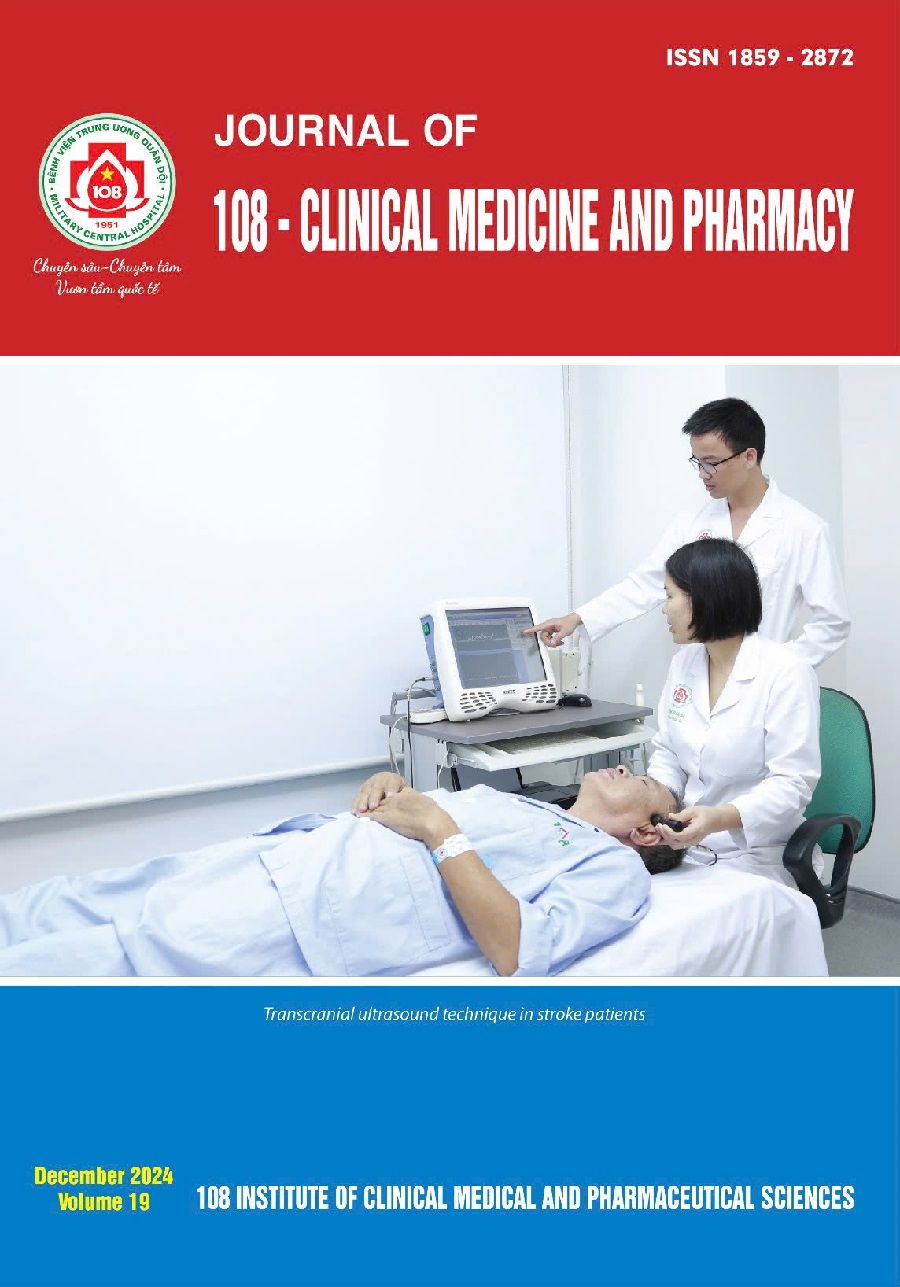The prognostic models for predicting the survival probability of septic patients: A cohort study in Vietnam
Main Article Content
Keywords
Tóm tắt
Objective: To predict the survival probability of septic patients over time, integrating the Sequential Organ Failure Assessment (SOFA) score with other key clinical features. Subject and method: Using stepwise and exhaustive search techniques, we analyzed time-dependent data from 125 patients in the Intensive Care Unit of the 108 Military Central Hospital, collected during a cohort study conducted between December 2019 and February 2021. Result: We identified 11 prognostic factors related to vital signs, onset symptoms, blood investigations, and severity of illness scores that significantly influence the mortality rate as well as the survival probability at the specified time. A proposed model incorporating four key factors - SOFA score, shivering, hemoglobin and septic shock - demonstrated superior performance compared to a univariate Cox model based solely on SOFA. This improvement was evidenced by better quality metrics, such as the Akaike Information Criterion (AIC) and enhanced calibration plots. Additionally, we introduce a user-friendly nomogram to estimate 7-day, 14-day, and 30-day mortality risks for septic patients using the identified significant factors. Conclusion: This study provides valuable insights into the survival probabilities of septic patients and offers a practical prognostic tool for clinical application. With further validation and refinement, the findings could make a significant contribution to improving sepsis management and patient outcomes in diverse healthcare settings.
Article Details
Các tài liệu tham khảo
2. Hotchkiss RS, Monneret G, Payen D (2013) Sepsis-induced immunosuppression: from cellular dysfunctions to immunotherapy. Nature Reviews Immunology 13(12): 862-874.
3. Do SN, Luong CQ, Pham DT et al (2021) Factors relating to mortality in septic patients in Vietnamese intensive care units from a subgroup analysis of MOSAICS II study. Sci Rep 11(1):18924. doi: 10.1038/s41598-021-98165-8.
4. Machado R, David C, Oliveira G et al (2005) Association of the SOFA Score and mortality in elderly patients with severe sepsis and septic shock. Crit Care 9(2):P49. doi: 10.1186/cc3593.
5. Liu H, Zhang L, Xu F, Li S, Wang Z, Han D, Zhang F, Lyu J, Yin H (2021) Establishment of a prognostic model for patients with sepsis based on SOFA: a retrospective cohort study. Journal of International Medical Research 49(9): 1–15.
6. Zhang L, Huang T, Xu F, Li S, Zheng S, Lyu J, Yin H (2022) Prediction of prognosis in elderly patients with sepsis based on machine learning (random survival forest). MC Emerg Med 22(1):26. doi: 10.1186/s12873-022-00582-z.
7. Papachristou GI, Whitcomb DC (2004) Predictors of severity and necrosis in acute Pancreatitis. Gastroenterology Clinics of North America 33 (4): 871-890.
8. Singer M, Deutschman CS, Seymour CW et al (2016) The third international consensus definitions for sepsis and septic shock (sepsis-3). JAMA 315(8): 801-810.
9. Schoenfeld D (1981) The asymptotic properties of nonparametric tests for comparing survival distributions. Biometrika 68(1): 316-319.
10. Machado FR, Cavalcanti AB, Monteiro MB et al (2019) SOFA and qSOFA at admission to the emergency department: Diagnostic sensitivity and relation with prognosis in patients with suspected infection. Turkish Journal of emergency medicine 19(3): 106-110.
11. Angus DC, van der Poll T (2013) Severe sepsis and septic shock. The New England Journal of Medicine 369(9): 840-851.
12. Carvalho LT, Mendes PV, Besen BAMP, Park M (2022) The hemoglobin level impact on arterial oxygen saturation during venous-venous-extracorporeal membrane oxygenation support of acute respiratory distress syndrome patients: a mathematical marginal approach. Revista Brasileira De Terapia Intensiva 34(3): 393-395.
13. Van Dissel JT, Numan SC, Van’t Wout JW (2005) Chills in “early sepsis”: good for you? Journal of Internal Medicine 257(5): 469-472.
 ISSN: 1859 - 2872
ISSN: 1859 - 2872
